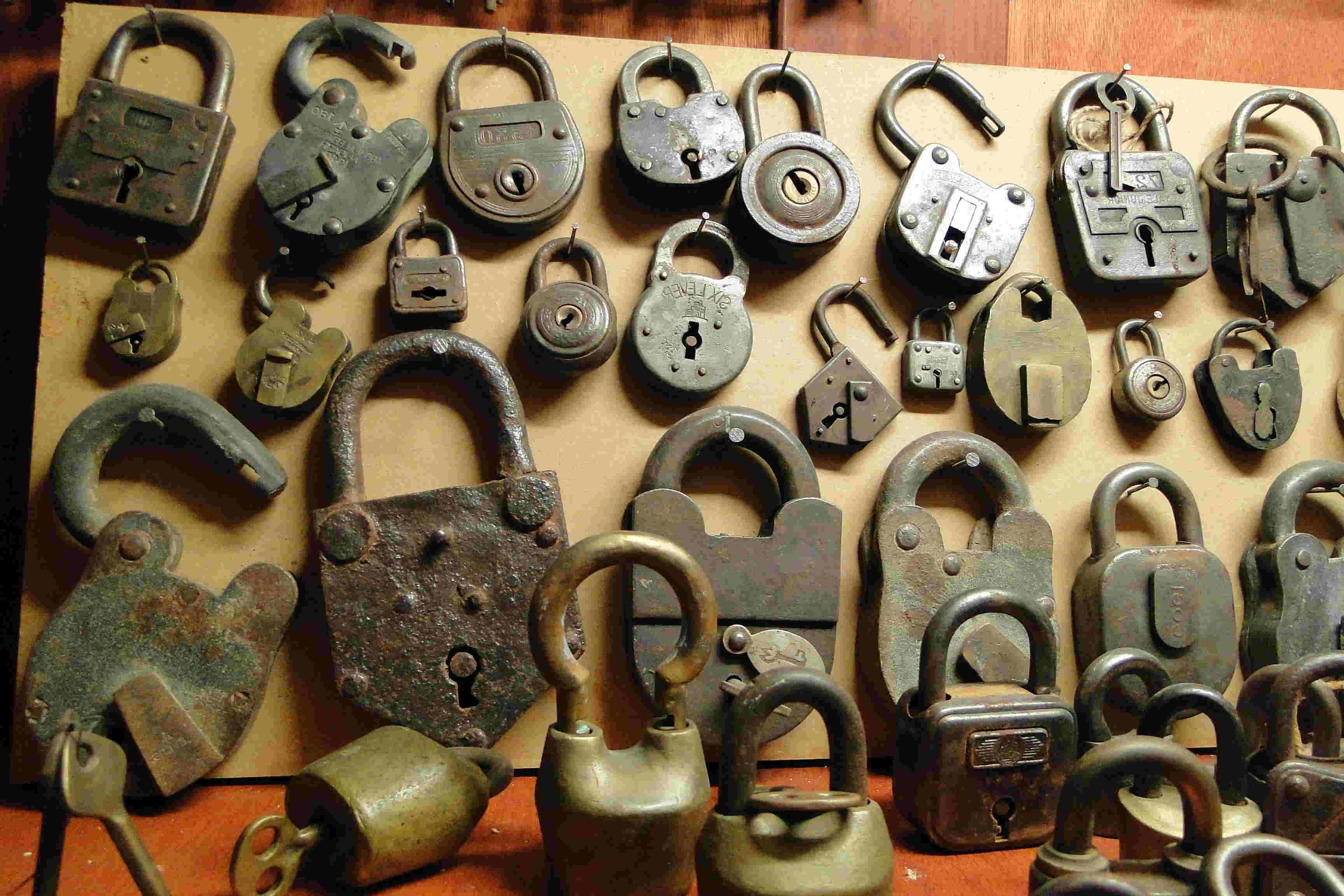
Ever wondered how locks came to be? Lock making has a rich history spanning thousands of years, from ancient wooden contraptions to modern high-tech security systems. Locks have always been crucial in protecting valuables and ensuring privacy. The journey of lock making is filled with fascinating innovations and clever designs. Did you know the earliest known lock was discovered in the ruins of Nineveh, the ancient capital of Assyria? Or that the Egyptians used wooden pin tumbler locks as far back as 4000 BC? Join us as we explore 35 intriguing facts about the evolution of lock making, shedding light on the ingenuity and craftsmanship that have kept our belongings safe through the ages.
Key Takeaways:
- Lock making has a fascinating history dating back thousands of years, with ancient civilizations like the Assyrians, Egyptians, and Greeks contributing to its development. From intricate Viking locks to modern electronic and biometric locks, the evolution of lock technology has been truly remarkable.
- Locks have not only served practical purposes but also held cultural significance, from symbolizing wealth in ancient Rome to becoming romantic gestures in the form of love locks. They have also been featured in literature, art, and even in quirky traditions like the "lock-in" at British pubs.
Ancient Beginnings
Lock making has a rich history that dates back thousands of years. Let's explore some fascinating facts about its origins and development.
- The earliest known lock was found in the ruins of Nineveh, the capital of ancient Assyria, dating back to around 4000 BC.
- Ancient Egyptians created the first known pin tumbler lock around 2000 BC. This wooden lock used pins of different lengths to secure doors.
- Roman locks were more advanced, often made of iron or bronze, and included wards to prevent unauthorized access.
- The Greeks also contributed to lock technology, developing the "Greek lock," which used a bolt and key mechanism.
- In ancient China, locks were often made of bronze and featured intricate designs, symbolizing wealth and status.
Medieval Innovations
The Middle Ages saw significant advancements in lock making, with craftsmen developing more complex mechanisms.
- By the 9th century, Viking locks featured intricate designs and were often used to secure treasure chests.
- Medieval European locks often included wards, which were obstructions inside the lock that only a correctly shaped key could navigate.
- The 14th century saw the introduction of the padlock in Europe, which became popular for securing gates and doors.
- Locksmiths in medieval times were highly skilled artisans, often creating custom locks for wealthy patrons.
- Some medieval locks included a "trick lock" feature, which required knowledge of a secret mechanism to open.
Renaissance and Beyond
The Renaissance period brought about further refinements in lock making, with an emphasis on both security and aesthetics.
- In the 16th century, locksmiths began to incorporate more decorative elements into their designs, making locks both functional and beautiful.
- The invention of the screw key in the 17th century allowed for more secure locks, as the key had to be turned multiple times to open the lock.
- By the 18th century, locksmiths were experimenting with combination locks, which required a specific sequence of numbers to open.
- The famous locksmith Robert Barron invented the double-acting tumbler lock in 1778, which greatly improved security.
- In 1784, Joseph Bramah patented the Bramah lock, known for its high level of security and resistance to picking.
Industrial Revolution
The Industrial Revolution brought about mass production and new materials, revolutionizing lock making.
- Linus Yale Sr. and his son Linus Yale Jr. made significant contributions to lock technology in the 19th century, including the invention of the modern pin tumbler lock.
- The Yale lock, patented in 1861, became one of the most widely used locks in the world due to its reliability and security.
- The introduction of steel in lock making allowed for stronger and more durable locks.
- Combination locks became more popular during this period, with James Sargent inventing the first successful key-changeable combination lock in 1857.
- The mass production of locks made them more affordable and accessible to the general public.
Modern Developments
Lock making continues to evolve with advancements in technology and materials.
- The 20th century saw the development of electronic locks, which use keypads or card readers instead of traditional keys.
- Biometric locks, which use fingerprints or retinal scans for access, have become increasingly popular in recent years.
- Smart locks, which can be controlled via smartphone apps, offer convenience and enhanced security for modern homes.
- High-security locks, such as Medeco and Mul-T-Lock, use complex keyways and pin configurations to resist picking and drilling.
- The development of 3D printing technology has allowed for the creation of custom locks and keys with intricate designs.
Fun Facts
Lock making has its share of quirky and interesting tidbits that highlight its cultural impact.
- The term "locksmith" comes from the Old English word "loc," meaning fastening or enclosure.
- In medieval times, locksmiths were often also blacksmiths, as both professions required metalworking skills.
- The phrase "lock, stock, and barrel" originated from the components of a musket, but it has come to mean "everything" or "the whole lot."
- The world's largest padlock, according to Guinness World Records, weighs 916 pounds and was created by a team of Russian locksmiths in 2003.
- The Lock Museum of America, located in Terryville, Connecticut, houses an extensive collection of locks, keys, and related artifacts.
Cultural Significance
Locks have played important roles in various cultures and societies throughout history.
- In ancient Rome, wealthy citizens often wore keys as rings to symbolize their status and wealth.
- The "love lock" tradition, where couples attach padlocks to bridges and throw the keys into the water, has become a popular romantic gesture in many cities worldwide.
- In Japanese culture, the "omamori" is a type of amulet that often includes a small lock to protect the wearer from harm.
- The "lock-in" is a tradition in some British pubs where patrons are allowed to stay and drink after official closing time, with the doors locked to prevent new customers from entering.
- Locks and keys are common symbols in literature and art, often representing secrets, security, and the unknown.
The Legacy of Lock Making
Lock making has a rich history that spans centuries, showcasing human ingenuity and the constant quest for security. From ancient wooden locks to modern digital ones, each era brought innovations that shaped how we protect our valuables. The evolution of locks reflects societal changes, technological advancements, and the ever-present need for safety.
Understanding the history of lock making not only gives us insight into past civilizations but also highlights the importance of security in our daily lives. Whether it's the intricate designs of medieval locks or the sleek mechanisms of today's smart locks, each piece tells a story of craftsmanship and innovation.
As we continue to develop new security measures, the legacy of lock making reminds us of the timeless human desire to safeguard what we hold dear. This journey through time underscores the significance of locks in our world, both past and present.
Frequently Asked Questions
Was this page helpful?
Our commitment to delivering trustworthy and engaging content is at the heart of what we do. Each fact on our site is contributed by real users like you, bringing a wealth of diverse insights and information. To ensure the highest standards of accuracy and reliability, our dedicated editors meticulously review each submission. This process guarantees that the facts we share are not only fascinating but also credible. Trust in our commitment to quality and authenticity as you explore and learn with us.


